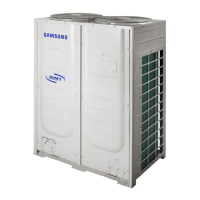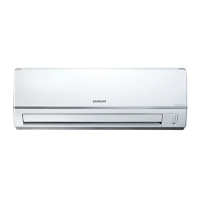33
English
Installation manual
Performing the gas leak test
To identify potential gas leaks in the indoor unit, inspect
the connection area of each refrigerant pipe using a leak
detector for R-32.
Before vacuuming and circulating the refrigerant gas,
pressurize the whole system with nitrogen (using a cylinder
with a pressure reducer) at a pressure of 4.0 MPa(594.7
psi) (gauge) to immediately detect leaks on the refrigerant
fittings.
Make a vacuum for 15 minutes and pressurize the system
with nitrogen..
Gas
refrigerant port
Insulator
Liquid refrigerant
port
Insulating the refrigerant pipes
Once you have checked that there are no leaks in the
system, you can insulate the piping and hose.
1 To avoid condensation problems, place Acrylonitrile
Butadien Rubber separately around each refrigerant pipe.
No gap
NBR
NOTE
• Always make the seam of pipes face upwards.
CAUTION
• The insulation has to be produced in full compliance
wirh European regulation EEC / EU 2037 / 2000
requiring the use of sheaths insulation without using
CFC and HCFC gases for health and the environment.
2 Wind insulating tape around the pipes and drain hose
avoiding compressing the insulation too much.
Indoor unit
Insulation cover pipe
Be sure to overlap the insulation.
Insulation pipe
CAUTION
• Be sure to wrap insulation tightly without any gaps.
3 Finish wrapping insulating tape around the rest of the
pipes leading to the outdoor unit.
4 The pipes and electrical cables connecting the indoor
unit with the outdoor unit must be fixed to the wall with
suitable ducts.

